Fashion
Has the Fashion Industry Kept Its Diversity Promise?
Published
4 years agoon
By
Terry Power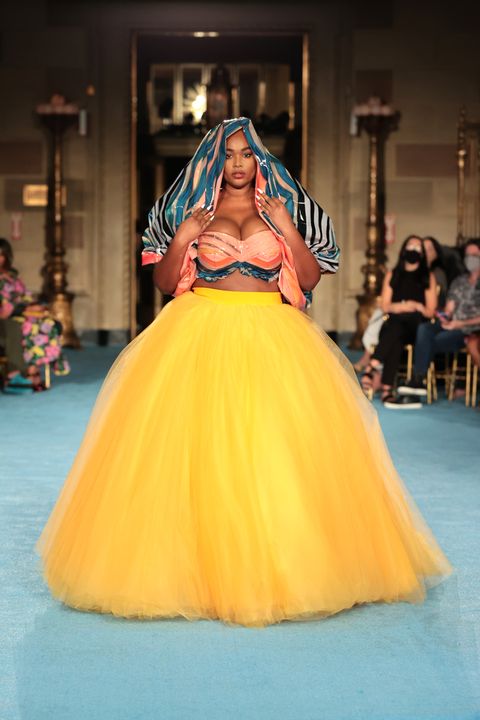
After the murders of George Floyd and Breonna Taylor by police, the protests that ensued during the summer of 2020 cornered a number of industries into publicly declaring their support for the Black community. Fashion was no exception. Long-known for its less-than-stellar reputation for racial diversity, brands across all facets of the business made formal and informal commitments to do better. But has there been any progress?
A comprehensive New York Times piece published in April highlights quite plainly the executive level’s response to members of the press inquiring about fashion’s diversity problem: only allowing interviews via email or questions in advance, relying heavily on PR jargon to describe their diversity initiatives, and completely shying away from sharing hard numbers.
Specifically, a set of questions sent to the Council of Fashion Designers of America (CFDA) via email (a phoner was not possible due to a scheduling conflict, according to their rep) didn’t reveal much in the way of measuring exactly how far along the company has made strides on diversity.
The response eventually came from CFDA president CaSandra Diggs herself. Diggs was appointed in August of last year, the first Black person to assume the role in the company’s 59-year history. She pointed out the limits of quantifying by race: “While I understand the desire to focus on numbers to keep companies accountable, the primary focus on quotas, which emphasize quantity over quality, does little to help usher in the sea change,” she said via email. “Quotas can undermine the confidence of Black talent and erode their true value to companies as their presence is branded ‘tokenism.’”
Mike CoppolaGetty Images
She isn’t totally wrong, but it’s difficult to measure progress without focusing on the numbers. The tech industry also has a poor reputation on the diversity front, but giants like Google have easily accessible data breaking down the racial makeup of their employees. That level of transparency would be a step in the right direction.
The job of holding fashion companies accountable has unfortunately fallen to the very people who have had to claw their way to the top. Black in Fashion Council, which was founded by The Cut editor-in-chief Lindsay Peoples Wagner and publicist Sandrine Charles, is focusing on a top-down approach to ensuring brands keep their word. Founded last year, the organization is made up of professionals with varying roles in the industry. Though strategy differs from company to company, according to Wagner, “with every single one, we have quarterly calls to go over specific initiatives that they have put in writing.” In addition to providing guidance to companies, Black in Fashion Council hosts job fairs, town halls, and showrooms featuring Black designers.
The increase in interest for working with the Black in Fashion Council can be attributed to the fact that “companies are seeing what we’re doing and we have tangible results,” said Charles, adding that she thinks brands “want to be a part of the change we’re trying to make.”
When asked about its company goals or benchmarks it would like to reach in terms of the amount of Black talent represented, LVMH responded via email: “LVMH’s goal in the U.S. is to increase the representation of people of color (inclusive of Black talent) in senior leadership positions to 30 percent (versus 26 percent currently), while our employee base is 64 percent non-white (including 12 percent Black talent).” It’s also worth noting that companies are not allowed to gather diversity statistics in many European countries, including France and Italy.
This content is imported from Instagram. You may be able to find the same content in another format, or you may be able to find more information, at their web site.
One of LVMH’s benchmark brands, Sephora, “is making strides with strong D&I initiatives,” they wrote. An example of that commitment seems to be the cosmetic retailer’s decision to take the 15 Percent Pledge.
The 15 Percent Pledge, a non-profit created last summer by designer Aurora James, asks retailers to make a contractual commitment to dedicate 15 percent of their shelf space to Black-owned brands over the course of an agreed upon length of time. The pledge includes a quarterly audit and an assessment of recruiting practices. To date, 27 retailers have taken the pledge, including Nordstrom, Gap Inc., Madewell, and Kith.
“If you have a retail store where 40 percent of your employees are Black, but then you have 2 percent of your corporate staff that’s Black, no Black board members, and then 70 percent of your models and your marketing campaigns are BIPOC, that’s optical allyship.” With this statement, James is highlighting how brands can often give off a veneer of diversity, without actually doing the work to achieve those goals. That is precisely what she’s trying to upset with her organization.
Despite roughly a year and a half out from its founding in May 2020, James has already seen the impact of the pledge. “I see those dollars at work. I see those purchase orders that they’re giving to Black-owned businesses.”
The job of holding fashion companies accountable has unfortunately fallen to the very people who have had to claw their way to the top.
The fashion industry is of course made up of all kinds of professions, most of whom don’t work in its highest ranks: hair stylists, makeup and nail artists, photographers, stylists, editors, publicists, casting agents, and countless assistants and interns. Whether any change is happening and whether it’s being felt has to go beyond speaking to people in the C-suite of major companies. Which means, measuring the progress of racial diversity is going to be long, arduous, and complex. For Black professionals in the industry, many of whom work in a freelance capacity, COVID-19 added another devastating layer to 2020.
For Kelly Bellevue, a 31-year-old New York-based makeup artist, work ground to a halt until early 2021. Now that she is working consistently, she said she has noticed a difference in the amount of diversity on set. “Prior to 2020, I—and maybe one other assistant—would be the only Black people on set,” she said. After COVID restrictions eased, “I have not been on a set where I’m the only Black person… ever.”
Celebrity hairstylist Naeemah Lafond, 42, shared similar sentiments. “For the first time ever, I’m seeing Black talent on set, consistently,” she wrote. Lafond, who published her own Instagram guide on how the industry can show up for Black hair stylists last summer, has also served as a mentor in an incubator program created last year by The Wall Group to pair talent at the agency with creatives from underrepresented backgrounds.
That progress hasn’t been felt by Kuoth Weil, a 30-year-old model and actress based in Los Angeles. She said that, in her experience, there hasn’t been “any kind of strides in terms of the promise that brands had made in order to make sure that Black or people of color get equity for the work that they’re doing.”
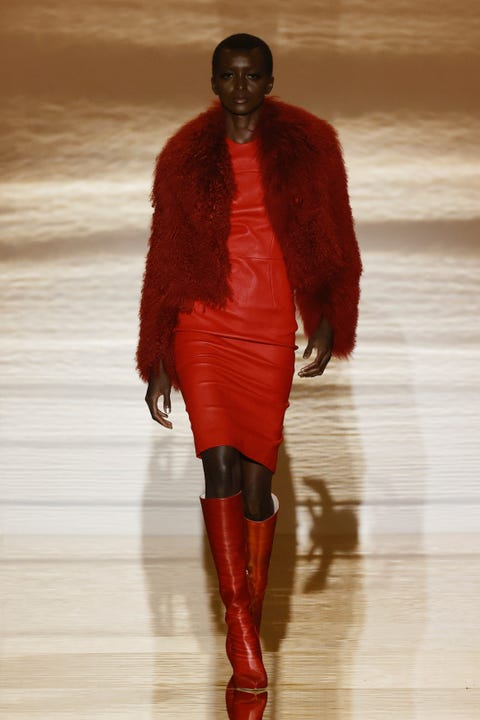
Frazer HarrisonGetty Images
Michael Rotimi, the 31-year-old founder of Offshore, said his model and talent agency was always viewed as a place “where you could find Black talent.” After the protests last year, “people that probably already knew about me took the opportunity to reach out and work with me to, I guess, feel less guilty about their normal practices.” Rotimi described that time as “an influx” but outreach gradually “just kinda got like less and less, but still steady.”
Even as those “steady” incremental changes are made, some may question whether it’s sincere. Jorge Wright, a freelance casting director who is most known for casting non-models of color, said he has seen some improvements but doesn’t know “if it’s genuine.” Wright said he hasn’t personally experienced a real change in the amount of work he has gotten, though he notes his friends signed to agencies have seen a boost. “I’m at the point in my Blackness where I’ll take it how I can get it,” Wright said. “I don’t care what your intents were. It is what it is. She got paid, we got paid, and we look great.”
Even within the Black community, your professional experiences are shaped in large part by your perceived racial makeup. New York-based photographer Cheril Sanchez is conscious of the fact that, as a fair-skinned Afro-Latina, she may not have always had the same struggles as darker-skinned professionals in her field. That said, she wants to take a step back from the industry and focus on telling more personal stories in her work, adding, “I love working in fashion, but there’s a lot of gate-keeping going on.”
As one of the recipients of Harlem’s Fashion Row Icon 360 grant, designer Sergio Hudson, 37, sees progress being made to amplify Black talent. He also recognizes that there is a long-held perception that Black designers aren’t expected to make luxury clothing. Hudson, whose garments have been worn by the likes of Michelle Obama and Kamala Harris, believes Black designers are often shut out of the American sportswear category. “Why?” he asks. “Because we’re not expected to make clothing that the First Lady would want to wear.”
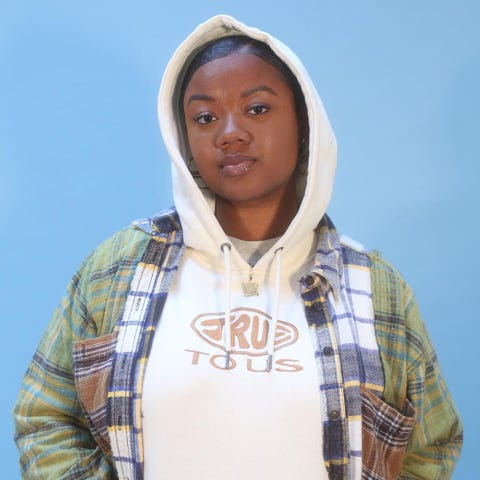
Though content creator Jourdan Ash’s focus is on streetwear and not luxury, the platform that she is building with True to Us highlights Black and brown women in a segment of the industry that has gotten visibly more white, despite Black people being its main source of inspiration. “In sneakers and streetwear, in order to have a space in these areas, you have to look a certain way and be a certain type of attractive,” said the 28-year-old Harlem native. “In 2021, we shouldn’t even have to be looking at a campaign where we ask, ‘Where are the Black women?’”
For photographer Breyona Holt, 26, Black women are her primary subjects, but acceptance in the industry has come with caveats. “Although they took chances on a lot of us throughout the year, we were micromanaged throughout the entire process,” she said. And for the Black creatives getting high-profile campaigns for the first time, determining their rates will also be a hurdle. “When you talk to other white artists, you realize that because we had never been in a space like this, we don’t even know the rates that were happening before,” Holt said. “So some of us are still being paid under the wage that we’re actually supposed to be paid for the role.”
What can have an impact is mentorship—someone who is committed to showing you the ropes and helping you succeed. “I feel like there are so many opportunities to take someone under your wing and make a complete difference in their lives,” said publicist Ah-Niyah Gold, whose client list includes the platform Black Fashion Fair. Having a mentor who introduced her to all aspects of the industry ultimately led her to PR, and eventually starting her own agency. “I just feel like those things ultimately will help build us up and also keep us informed and not in the dark.”
According to Clara Jeon, co-founder of Chapter 2, a communications and brand management agency, “While there are more press opportunities for Black designers, I get really frustrated by the doubling down on the sense of otherness.” Jeon, who is Asian, points out that during Black History Month she gets increased interest in the Black designers on her roster. “Where are you every other month?” she asks rhetorically.
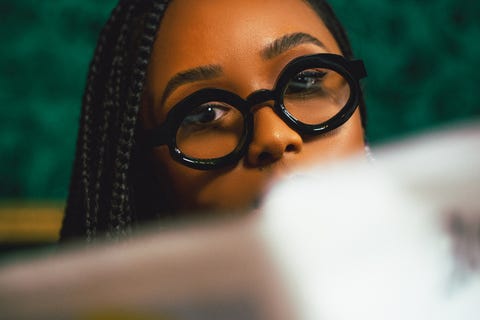
Courtesy
If fashion companies are committed to a more diverse workforce, how they recruit from colleges is an important point of focus. “There was significant interest and outreach from fashion companies saying they want diverse talent for internships and employment,” said Tardis Johnson, Associate Dean for Student Academic Support at the Fashion Institute of Technology. “We had the pandemic happening, so that put limitations on what can be done as part of recruitment.”
Brandice Daniel, founder and CEO of Harlem’s Fashion Row, also recognizes the need to prioritize college students and HBCUs in particular. “We made supporting HBCU Fashion Departments a pillar for our non-profit ICON360,” she said. “When we spoke with Gap Inc. about this pillar, they wanted to support it immediately.” That support came in the form of a collaboration called “Closing the Gap,” funded by the retailer in the form of $510,000 awarded to ten historically Black colleges and universities.
For all the talk of inclusion and acceptance into the fashion industry, it’s also worth asking how much designers even care to be a part of the industry in any formal capacity. Black designers don’t necessarily need to be on the fashion calendar to succeed. These days, all it takes is a Shopify account and cultivating a community of people who love your product.
When it comes to expectations of the fashion industry, Ember Niche co-founder Timothy Campbell said he doesn’t have any. “I feel like we’re moving into a more decentralized world,” he said. Campbell’s eyewear brand got a grant, not from old-guard gatekeepers like the CFDA, but from the rapper 2 Chainz. “People are just going and finding their own little communities,” he said, adding, “we don’t have to rely on that industry.”
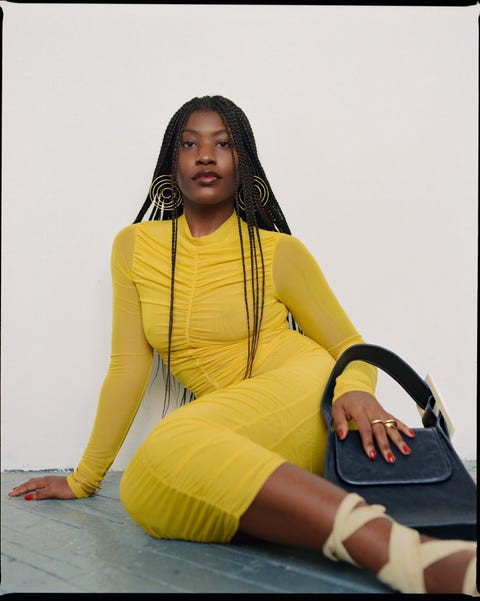
Courtesy
On the opposite end, Jameel Mohammed, 26, who founded the jewelry brand Khiry in 2016, has felt palpable support from the fashion industry. In fact, he’s received $200,000 in grants all in. Despite that funding, Mohammed says he’s planning for a day when the level of interest he received in the past year or so wanes. His goal is to “be less dependent on the co-sign of people with power because you have it yourself.”
Overall, it seems most will point out that, though positive change is happening at a snail’s pace in the fashion industry, it is indeed happening. People who feel that change and how much they stand to benefit is going to be determined by what their profession is and their level in the hierarchy.
Fashion is, of course, about clothing and the designers who create them, but countless other workers keep the industry chugging along. It might be time to have a more expansive conversation about who really deserves the industry’s support.
Sade Mims, who founded the accessories line EDAS in 2015, said she’s made the most money of her career in these last two years alone. “America is having a deep awakening with its history,” she said. “People are still holding themselves accountable. But I do wonder what that looks like five years from now.” Your move, fashion industry.
You may like
-


The Download: the promise of stem cell treatments, and China’s screen time crackdown
-


The Download: overhauling air conditioning, and China’s fast fashion war
-
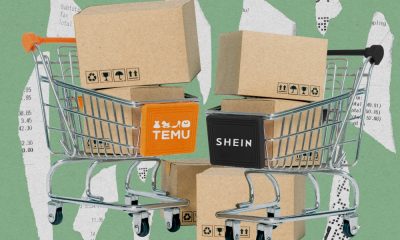

Shein sued Temu. Temu sued Shein. The war over fast fashion is heating up.
-
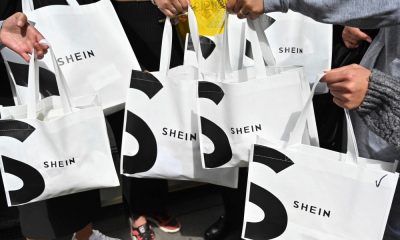

Shein’s charm offensive is off to a rocky start
-


Personalized Bi-Sensory Stimulation Shows Promise In Treating Tinnitus, Study Shows
-


Modernizing the automotive industry: Creating a seamless customer experience
Fashion
Jennifer Lopez Joined Ben Affleck In L.A. With Kids For Thanksgiving
Published
3 years agoon
26 November 2021By
Terry Power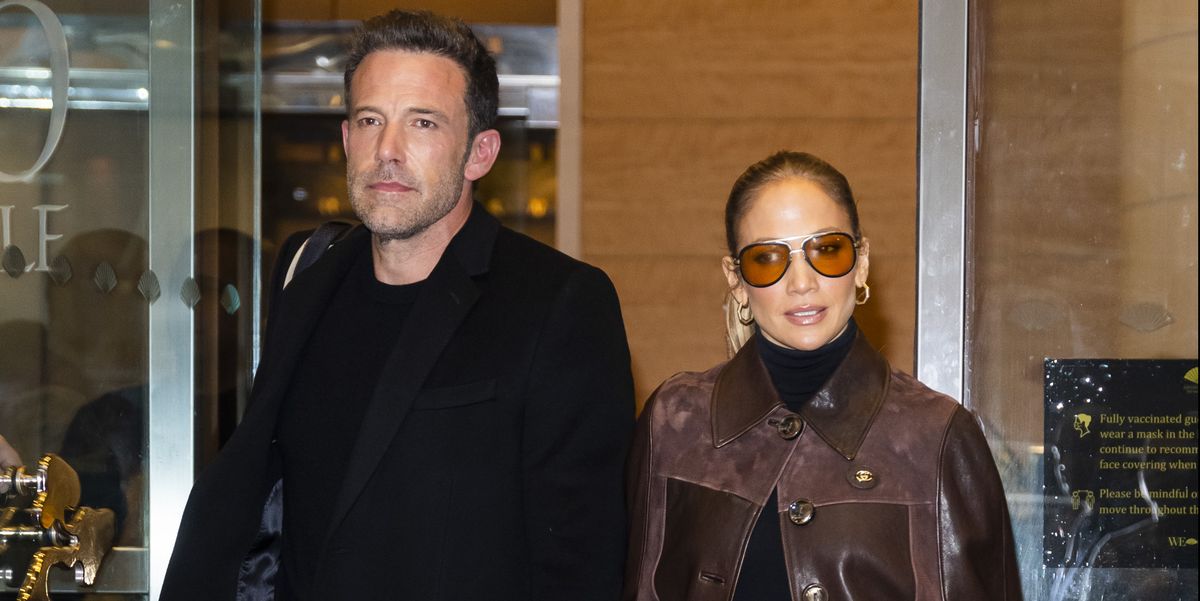
On Wednesday night, Jennifer Lopez arrived in Los Angeles with her 13-year-old twins Max and Emme. The family was likely there to join Lopez’s boyfriend, Ben Affleck, for the Thanksgiving holiday. Lopez recently returned from the much colder climate of British Columbia, Canada, where she was filming her latest project, The Mother.
J. Lo touched down in her private jet wearing a teddy fur coat from Coach’s Autumn/Winter 2019 collection, and a pair of Ugg boots. Classic airplane outfit, celebrity style. Lopez and Affleck originally dated in 2002 and broke up in 2004. Their romance was rekindled earlier this year, soon after Lopez ended her relationship with baseball player Alex Rodriguez. The new couple went official in July, while celebrating Lopez’s 52nd birthday abroad.
Affleck’s most recent relationship with Ana de Armas ended in January after about a year together. He had divorced ex-wife Jennifer Garner in 2015 after being married for almost a decade. Garner and Affleck had three daughters, Violet, Seraphina, and Sam.
Before traveling back to the U.S., Lopez posted a story to Instagram Reels about how grateful she was to be headed home.
“Hey everybody, it’s my last day here shooting on The Mother out in Smithers in the snow, it’s been beautiful, but tonight I’m on my way home,” she said, as she walked through the wild landscape in a black coat and beanie.
“I’m so excited for Thanksgiving! I hope everybody has an amazing weekend with their families and their loved ones, there’s so much to be grateful for this year. I’m on my way!”
This is the first major holiday of the year since Lopez and Affleck reunited, so it’s likely to be a big one for both families.
This content is created and maintained by a third party, and imported onto this page to help users provide their email addresses. You may be able to find more information about this and similar content at piano.io
Fashion
Everlane’s Black Friday Sale is Packed With Winter Essentials
Published
3 years agoon
26 November 2021By
Terry Power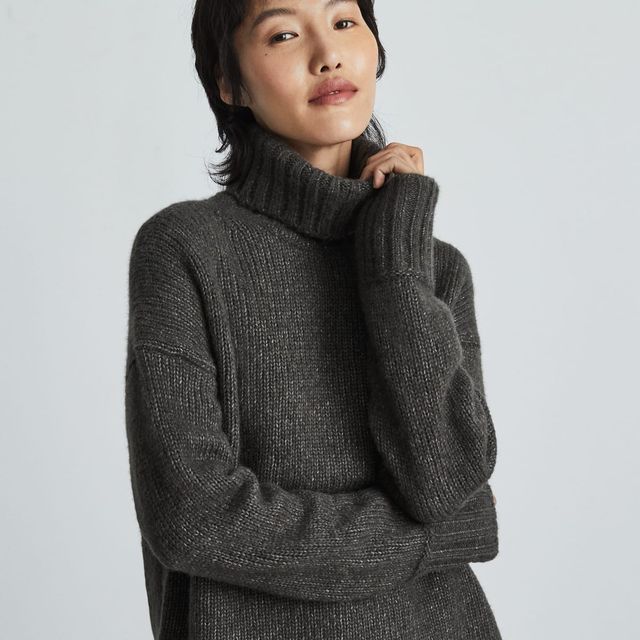
Courtesy
This is not a drill: Everlane just kicked off its Black Friday sale. Now through Monday, November 29, the direct-to-consumer brand is offering 20 to 40% off its cozy sweaters, minimalist activewear, and popular jeans. If you’re not super familiar with Everlane, let me spell it out for you: this is a big deal.
The e-tailer might be known for making sustainable, ethically made clothes and accessories at a fair, affordable price, but Everlane rarely has sales beyond its Choose What You Pay section. So, if you want to stock up on cute basics for less, now’s your time to shop.
And, in true Everlane fashion, the brand is taking this opportunity to give back. Everlane is partnering with Rodale Institute and help U.S. farmers transition their farmland to regenerative organic—and donating $15 per order to the cause. A great sale that gives back? I’m sold.
But, hurry! These deals are going to sell out fast, so you won’t want to waste any time filling your e-cart.
Advertisement – Continue Reading Below
1
The Cloud Turtleneck
$150 $105 (30% off)
Sweater weather is officially here, so why not pick up a few fresh layers? This turtleneck is the S’s: snuggly, stylish, and on sale.
2
The Authentic Stretch High-Rise Skinny Jeans
everlane
$78 $58 (25% off)
Looking for a great pair of jeans, minus the markup? Everlane’s classic skinny style is not only super stretchy, but it’ll look good with everything from chunky sweaters to silky blouses.
3
The ReNew Teddy Slippers
everlane
$65 $39 (40% off)
Why limit the shearling trend to the upper half of your body? These plush slippers will give even your most worn-in sweats a stylish edge.
4
The Chunky Cardigan
everlane
$110 $77 (30% off)
Sure, this may not be the cardigan Taylor Swift was talking about. But, with an exaggerated collar and ribbed finish, this style would definitely score top marks from the singer herself.
5
The Canvas Utility Boots
everlane
$115 $59 (40% off)
Brave the cold weather in style with Everlane’s chic boots. The canvas uppers and thick sole make these an ideal, all-weather option.
6
The Lofty-Knit Henley
everlane
$150 $105 (30% off)
Made with a nubby blend of merino wool, alpaca, and recycled nylon, this henley is perfect for a cozy night in, yet stylish enough to wear in public.
7
The Perform Bike Shorts
everlane
$45 $22 (51% off)
No, you can never have too many stretchy pants. Everlane’s bike shorts ooze major Lady Di vibes — for under $25, no less.
8
The ReLeather Court Sneakers
everlane
$110 $66 (40% off)
Made with recycled leather, these refresh sneakers will serve up major curb appeal — and Mother Nature’s seal of approval.
9
The Field Dress
everlane
$100 $60 (40% off)
Found: a fun, flouncy frock you can wear year-round. For a wintry take, pair with opaque tights and your favorite chunky boots.
10
The Cozy-Stretch Wide-Leg Sweatpants
everlane
$150 $75 (50% off)
With a straight-legged silhouette and wool material, it’s safe to say these are the chicest sweatpants we’ve ever seen. To sweeten an already enticing offer, this pair is half off.
11
The Organic Cotton Flannel Popover
$80 $56 (30% off)
Everlane reimagined the traditional flannel with a cropped silhouette, voluminous sleeves, and a slew of minimalist colors.
12
The Studio Bag
everlane
$275 $192 (30% off)
Large enough to fit all your essentials, but not too big that it’ll weigh you down, Everlane’s Studio Bag is the perfect everyday purse.
13
The ReNew Long Liner
everlane
$158 $118 (25% off)
House Stark was right: winter really is coming. Made with recycled materials, this liner is a great layering piece that’s considerably chicer than the yesteryear’s Michelin Man-worthy parkas.
14
The Felted Merino Beanie
everlane
$50 $30 (40% off)
All set on clothes? Pick up this cheery beanie, which is 40% off its original price.
Kelsey Mulvey is a freelance lifestyle journalist, who covers shopping and deals for Marie Claire, Women’s Health, and Men’s Health, among others.
This content is created and maintained by a third party, and imported onto this page to help users provide their email addresses. You may be able to find more information about this and similar content at piano.io
Advertisement – Continue Reading Below
Fashion
29 Winter Fragrances That Exude Main Character Energy
Published
3 years agoon
26 November 2021By
Terry Power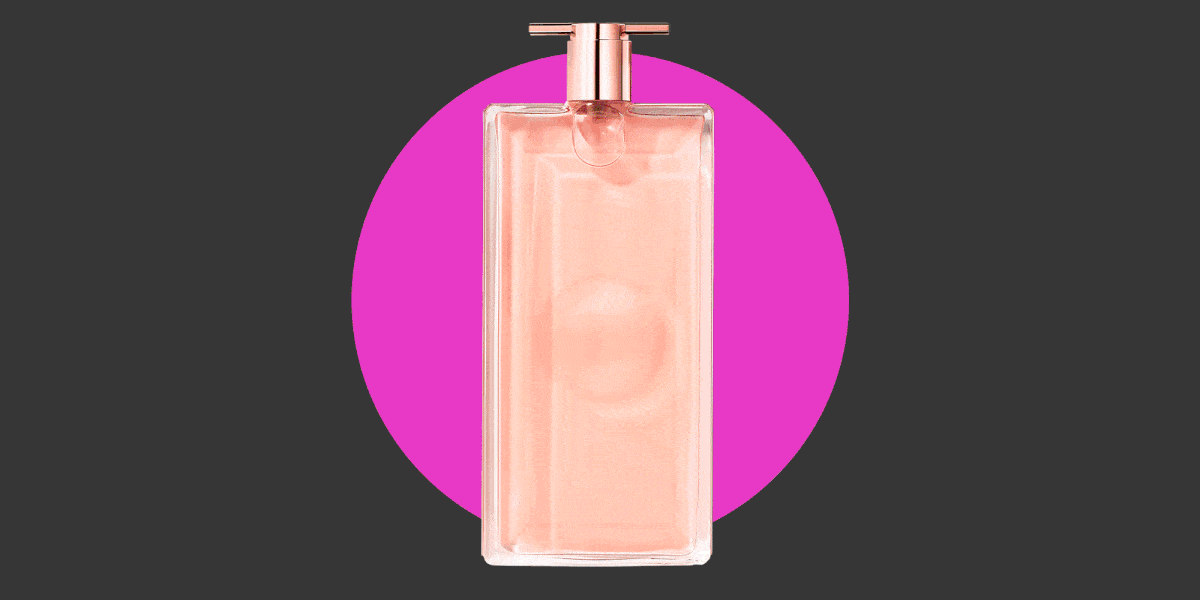
29 Winter Fragrances That Exude Main Character Energy
